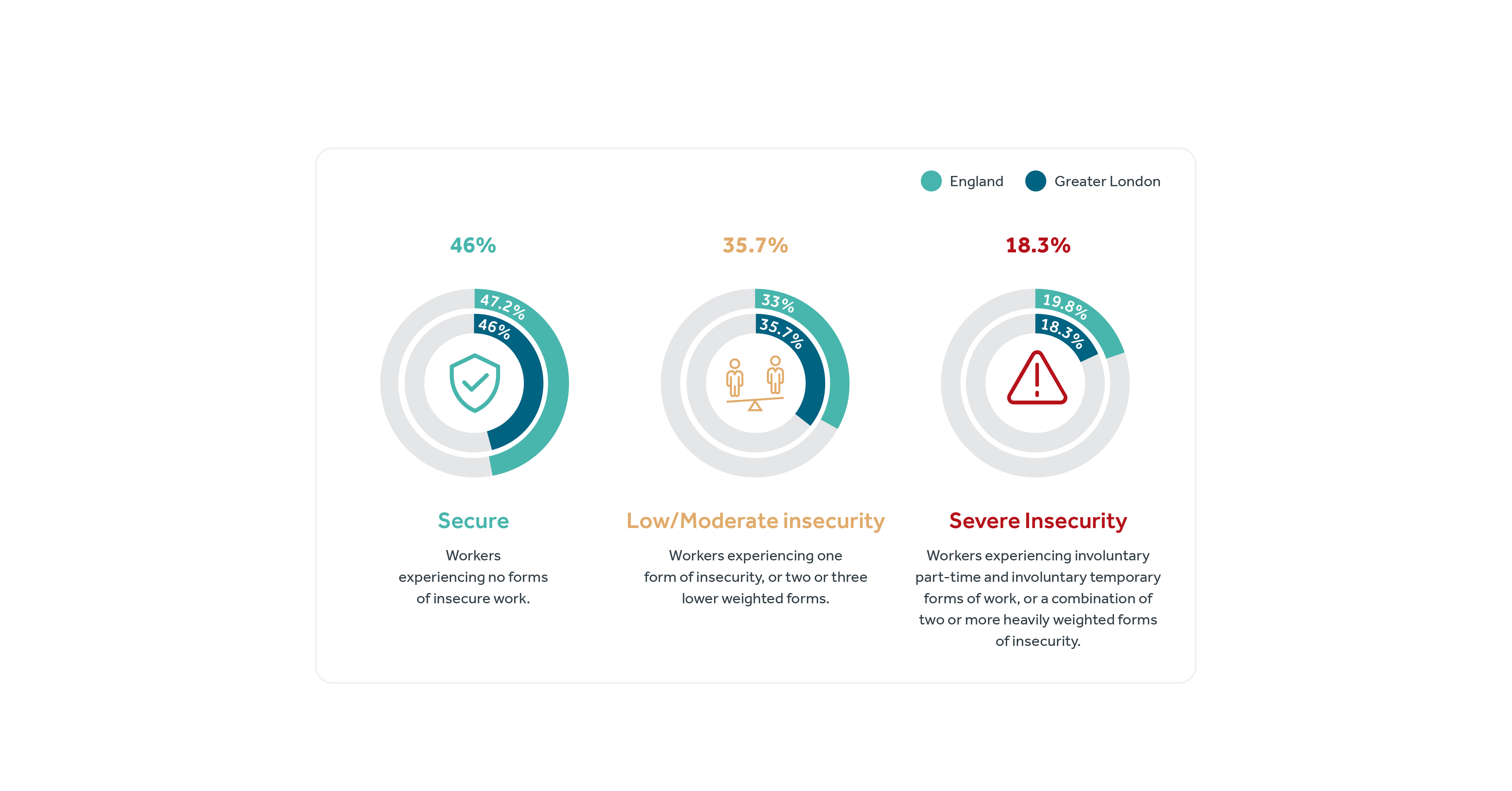Greater London City Region Employment Profile
Posted on

Greater London has a population of 8,796,600 (ONS, 2022). A third of the workforce works in the professional and scientific, health and social care, and education sectors. The economy has an average annual economic growth rate (2001-2021) of 4.3%.
It has an employment rate of 76.2% and its unemployment rate (4.5%) is higher than the English average (3.7%) [ONS, 2023]. Economic inactivity is lower in Greater London (20.2%) than the rest of England (21.4%) [ONS, 2023]. Workers in the region earn a weekly wage of £847.50, which is £217 above the English average wage (Centre for Cities, 2023).
Nearly one in five (18.3%) workers in Greater London are in severely insecure work, which is slightly lower than the national average of 19.8%.
There is some variation in the incidence of severely insecure work within the local authorities of the Greater London region. Nearly a quarter of Barnet’s workers (24.3%) are in severely insecure work while the same proportion of people are economically inactive. Lewisham, Newham, and Brent are also hotspots for severely insecure work with 23% of workers in these boroughs in severely insecure employment. On the other end of spectrum, over half of the workforce in Merton, Haringey, Richmond-upon-Thames, and Hounslow are in secure employment. Only 14.5% of workers in Haringey are in severely insecure work which is the lowest incidence of severe insecurity of any borough in London.
Analysis shows that women, workers from ethnic minority backgrounds, disabled workers, and workers between the ages of 16 and 24 are most likely to be in severely insecure work in Greater London.

Source: Work Foundation calculations of the Office for National Statistics Labour Force Survey; 2021- 2022.
Related Reports
Back to report listing




